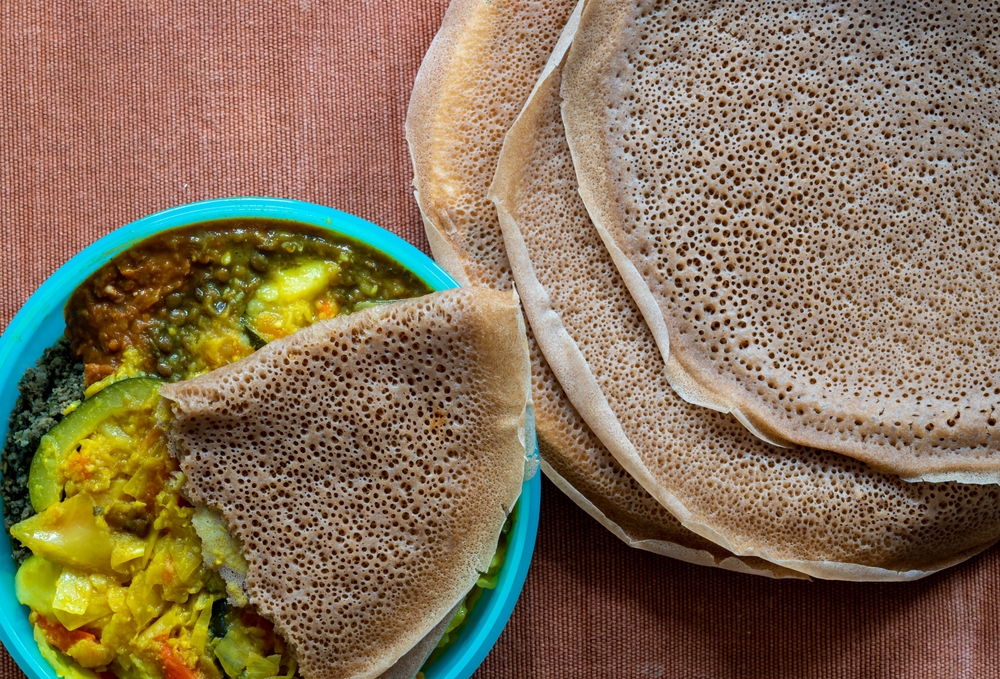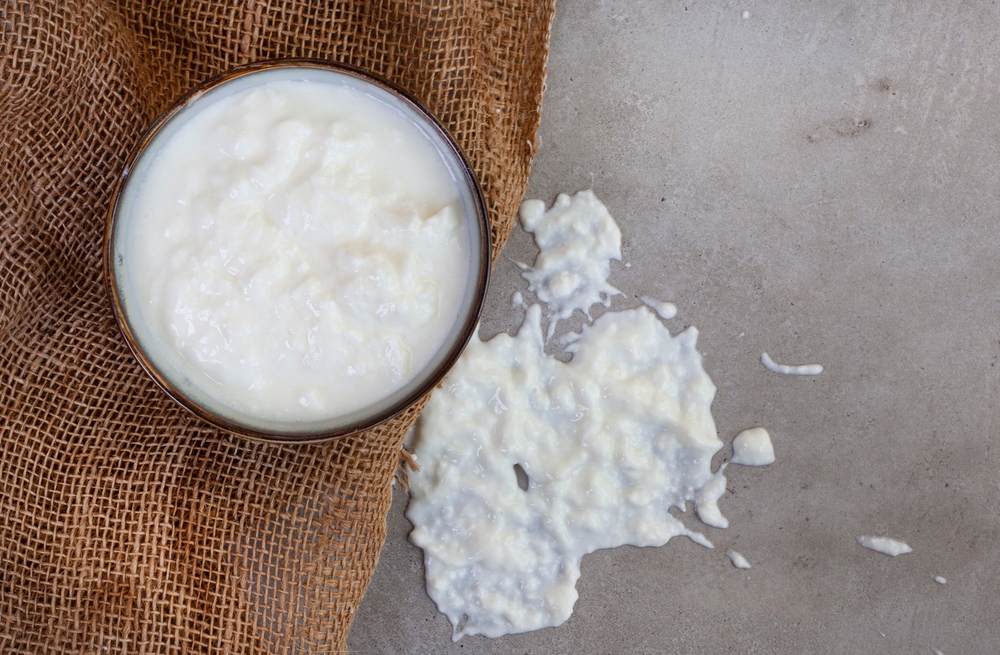The Essence of Fermentation in Africa
Fermentation is an ancient culinary technique that has been practiced in Africa for centuries. This traditional process not only preserves food but also enhances its flavors, textures, and nutritional value. From the highlands of Ethiopia to the plains of Nigeria, Africa is a treasure trove of fermented delights that continue to captivate taste buds around the world.
Unveiling the Secrets of African Fermented Foods
In this blog post, we will explore the art of fermentation in Africa, delving into the ancient traditions and modern flavors that make it so unique. We will uncover the secrets behind some of the continent’s most beloved fermented foods, from injera, the spongy delight from the Ethiopian Highlands, to garri, West Africa’s cassava delight. Each dish tells a story of cultural rituals, craftsmanship, and the ingenuity of African cuisine.
A Culinary Expedition: From Ethiopia to South Africa
We will begin our journey in Ethiopia, where injera takes center stage. Made from teff and fermented using sourdough magic, injera is a staple in Ethiopian cuisine. We will learn about the fermentation process and discover the cultural rituals and meals that revolve around this beloved flatbread. We will also explore variations and dietary adaptations of injera, showcasing its versatility.
Lastly, we will venture to West Africa, where garri, a cassava-based delight, holds a special place in the hearts of many…

The Healthful Prominence of Fermented Foods
Throughout this blog post, we will also highlight the health benefits of African fermented foods. From the probiotics that promote gut health to the enhanced vitamins and minerals found in fermented dishes, we will explore the advantages of incorporating these culinary wonders into our diets. Additionally, we will discuss the modern research being conducted on African fermented foods and the growing global demand for these unique flavors.
Embracing the Art of African Fermentation
Join us on this journey as we celebrate the art of fermentation in Africa, uncovering ancient traditions and embracing the modern flavors that continue to enchant food lovers worldwide. From injera to garri, each dish represents a story of culture, heritage, and the transformative power of fermentation. Get ready to tantalize your taste buds and expand your culinary horizons.
Injera: The Spongy Delight from the Ethiopian Highlands
Injera is a spongy, pancake-like bread that holds a special place in Ethiopian cuisine. It is not only a staple food but also an integral part of Ethiopian culture and traditions. In this section, we will explore the unique fermentation process behind injera, the cultural rituals and meals associated with it, as well as the variations and dietary adaptations of this beloved Ethiopian delight.
Curious about the sourdough magic of Ethiopia? Dive deep into the making of Injera, a fermented marvel that’s central to Ethiopian feasts.

The Fermentation Process: Teff and Sourdough Magic
The key ingredient in injera is teff, a tiny grain indigenous to Ethiopia. Teff is packed with nutrients and possesses unique fermentation properties that give injera its characteristic flavor and texture. We will delve into the process of fermenting teff to create the batter used for making injera. From soaking and grinding the teff grains to mixing them with water and allowing the batter to ferment, we will uncover the steps involved in this ancient technique. Additionally, we will explore the role of sourdough in the fermentation process and how it contributes to the distinct tanginess of injera.
Cultural Rituals and Meals Centered Around Injera
Injera holds great cultural significance in Ethiopia and is often referred to as the “tablecloth” or “edible plate” of Ethiopian cuisine. We will explore the cultural rituals and traditions associated with injera, such as the communal way of eating where everyone shares from a large round injera placed at the center of the table. We will also learn about the importance of injera in Ethiopian religious ceremonies, festivals, and special occasions. Through this exploration, we will gain a deeper understanding of how injera not only nourishes the body but also brings people together.
Variations and Dietary Adaptations of Injera
While injera is traditionally made with teff, there are also variations that incorporate other grains such as wheat, barley, or sorghum. These adaptations cater to different dietary needs and preferences. We will explore the different types of injera and the regions in Ethiopia where they are popular. Additionally, we will discuss the gluten-free nature of traditional teff injera, making it a suitable option for individuals with gluten sensitivities or celiac disease. Furthermore, we will examine how injera is used as a versatile ingredient in Ethiopian cuisine, from wrapping around stews to serving as a base for various toppings.
Injera is not only a delicious and nutritious staple in Ethiopian cuisine but also a symbol of community and togetherness. Its unique fermentation process, cultural significance, and adaptability make it a fascinating culinary delight. Join us as we dive deeper into the world of injera and discover the artistry behind this spongy Ethiopian bread.

Uji: East Africa’s Fermented Porridge
Uji, a traditional fermented porridge, has deep roots in East African cuisine. This nourishing and comforting dish is a breakfast staple in many East African countries, including Kenya, Tanzania, and Uganda. In this section, we will explore the ingredients and preparation methods of uji, its role in breakfast rituals and ceremonies, as well as the nutritional benefits it offers.
Traditional Ingredients and Preparation Methods
Uji is typically made from a combination of grains, such as millet, sorghum, or maize, which are fermented to create a thick and creamy porridge. We will delve into the traditional ingredients used in uji and the importance of fermentation in the preparation process. From soaking the grains to grinding and fermenting them, we will uncover the steps involved in creating the base for this beloved breakfast dish. Additionally, we will explore the use of other flavoring ingredients such as sugar, spices, and milk to enhance the taste and texture of uji.
Uji’s Role in Breakfast Rituals and Ceremonies
Uji holds a significant place in the breakfast rituals and ceremonies of East African communities. We will explore the cultural traditions surrounding the consumption of uji, including its role in welcoming guests, celebrating special occasions, and nourishing the body before a day of work or activities. Additionally, we will uncover the communal aspect of enjoying uji, where families and communities come together to share a warm bowl of this fermented porridge, fostering a sense of togetherness and unity.
Want to start your day the East African way? Uncover the nutritional powerhouse and rich flavors of Uji, a fermented porridge that’s been cherished for generations.
Nutritional Benefits and Modern Variations
Uji is not only delicious but also offers several nutritional benefits. The fermentation process enhances the bioavailability of nutrients and makes them easier for the body to absorb. We will discuss the health benefits of uji, including its high fiber content, essential vitamins, and minerals. Furthermore, we will explore modern variations of uji that cater to different dietary preferences and nutritional needs. These variations may include the use of alternative grains, such as quinoa or oats, or the incorporation of additional ingredients like fruits, nuts, or seeds.
Uji represents more than just a breakfast dish in East Africa. It is a symbol of nourishment, tradition, and community. Join us as we delve into the world of uji, uncovering the ingredients, preparation methods, cultural significance, and nutritional benefits of this beloved fermented porridge. Get ready to embrace the warmth and comfort that uji brings to breakfast tables across East Africa.
Ogiri and Ugba: Nigeria’s Pungent Treasures
Ogiri and ugba are two pungent treasures that hold a special place in Nigerian cuisine. These fermented ingredients add unique flavors and aromas to dishes, elevating them to new heights. In this section, we will explore the crafting process of ogiri and ugba, their culinary uses, and how they are incorporated into modern Nigerian dishes.
Crafting Ogiri: From Melon Seeds to Pungent Paste
Ogiri is a traditional Nigerian condiment made from fermented melon seeds. We will delve into the intricate process of crafting ogiri, which involves soaking, fermenting, and grinding the melon seeds into a paste. We will explore the different types of ogiri, such as ogiri okpei and ogiri egusi, and how the fermentation process contributes to the distinct pungent and earthy flavors. Additionally, we will discuss the regional variations of ogiri and the cultural significance it holds in Nigerian cuisine.
Expand your culinary horizons with Nigeria’s pungent treasure. Learn how to craft the aromatic Ogiri and infuse your dishes with its unique flavors.
Ugba: The Fermented Oilbean Delight
Ugba, also known as ugba or ukpaka, is a fermented oilbean commonly used in Nigerian cooking. We will uncover the fermentation process behind ugba, which involves soaking the oilbean, wrapping it in leaves, and allowing it to ferment for several days. We will explore the transformation of the oilbean during fermentation, which gives it a unique texture and tangy flavor. Additionally, we will discuss the various dishes that feature ugba and how it adds depth and complexity to Nigerian cuisine.
Incorporating Ogiri and Ugba in Modern Dishes
While ogiri and ugba have deep roots in traditional Nigerian cuisine, they have also found their way into modern dishes. We will explore how these fermented ingredients are incorporated into contemporary Nigerian recipes, such as soups, stews, and sauces. We will discover the balance and harmony they bring to the overall flavor profile of these dishes. Furthermore, we will discuss the versatility of ogiri and ugba, showcasing their ability to enhance both vegetarian and meat-based preparations.
Ogiri and ugba are more than just ingredients; they are a testament to the rich culinary heritage of Nigeria. Join us as we uncover the art of crafting ogiri from melon seeds and the unique fermentation process behind ugba. Discover how these pungent treasures add depth and complexity to Nigerian dishes, bridging the gap between tradition and modernity. Get ready to embark on a flavorful journey through Nigerian cuisine.
Intrigued by the tangy delights of Nigeria? Discover the meticulous fermentation process behind Ugba and its significant role in Nigerian cuisine.
Bokashi: Zimbabwe’s Traditional Fermented Milk
Bokashi, a traditional fermented milk, is a culinary delight that holds a special place in Zimbabwean cuisine. This tangy and creamy beverage is not only a delicious treat but also a symbol of cultural traditions and heritage. In this section, we will explore the traditional preparation and culinary uses of bokashi, its role in Zimbabwean culture and traditions, and the health benefits associated with consuming this probiotic-rich beverage.
Traditional Preparation and Culinary Uses
Bokashi is traditionally made by fermenting raw cow’s milk in a gourd or clay pot. We will delve into the age-old process of preparing bokashi, which involves adding a starter culture or allowing the milk to naturally ferment. We will explore the importance of temperature, time, and hygiene in the fermentation process to ensure the desired flavor and consistency. Additionally, we will uncover the various uses of bokashi in Zimbabwean cuisine, including consuming it as a refreshing beverage or using it as an ingredient in dishes like porridge, soups, and sauces.
Quench your thirst with a sip of tradition from Zimbabwe. Dive into the rich world of Bokashi, a fermented milk beverage with deep cultural roots.

Bokashi’s Role in Zimbabwean Culture and Traditions
Bokashi holds a significant place in Zimbabwean culture and traditions. We will explore the cultural rituals and occasions where bokashi plays a central role, such as weddings, births, and religious ceremonies. We will also uncover the communal aspect of consuming bokashi, where it is often shared among family and community members as a symbol of unity and togetherness. Furthermore, we will discuss the importance of bokashi in preserving Zimbabwean culinary heritage and passing down traditional practices from one generation to another.
The Health Benefits of Consuming Bokashi
Beyond its delicious taste, bokashi offers several health benefits. As a fermented milk product, it is rich in probiotics, which promote a healthy gut microbiome and aid in digestion. We will explore the role of probiotics in supporting immune function and overall well-being. Additionally, we will discuss the nutritional composition of bokashi, including its protein, calcium, and vitamin content. We will also highlight the potential benefits of bokashi for lactose-intolerant individuals, as the fermentation process reduces lactose levels.
Bokashi represents more than just a fermented milk beverage in Zimbabwe. It is a symbol of cultural identity, community, and well-being. Join us as we uncover the traditional preparation methods, culinary uses, and cultural significance of bokashi. Discover the health benefits associated with consuming this probiotic-rich delight and gain a deeper appreciation for the role of bokashi in Zimbabwean cuisine and traditions. Get ready to savor the tangy and creamy flavors of this beloved fermented milk.
Moroccan Preserved Lemons: The Citrusy Gold
Moroccan preserved lemons, also known as “lemons confits,” are a culinary treasure that adds a burst of citrusy gold to dishes. This traditional Moroccan ingredient is renowned for its intense flavor and unique preservation method. In this section, we will explore the preservation process of Moroccan lemons, their culinary uses, and the modern twists and global influence of this tangy delight.
Citrusy, tangy, and oh-so-refreshing! Explore the art of creating the perfect Lemons Confit from Morocco and elevate your culinary creations.

The Preservation Process: Salting and Waiting
The preservation process of Moroccan lemons involves a combination of salt and time. We will delve into the technique of preserving lemons, which entails cutting them, packing them tightly in jars with salt, and allowing them to ferment for several weeks or months. We will discuss the role of salt in drawing out the lemon’s moisture and creating a briny, tangy flavor. Additionally, we will explore the importance of patience in the preservation process, as the flavors intensify over time.
Culinary Uses and Dishes Elevated by Preserved Lemons
Moroccan preserved lemons are a versatile ingredient that enhances many dishes. We will explore the culinary uses of preserved lemons in Moroccan cuisine, such as tagines, couscous, salads, and marinades. We will discover how the addition of preserved lemons brings a bright and tangy flavor that balances and elevates the overall taste profile of these dishes. Furthermore, we will discuss the creative ways in which preserved lemons are used in global cuisines, showcasing their versatility and adaptability beyond Moroccan dishes.
Modern Twists and Global Influence of Moroccan Lemons
While preserved lemons have deep roots in Moroccan culinary traditions, they have also gained popularity beyond the borders of Morocco. We will explore the modern twists and innovative uses of preserved lemons in contemporary cooking. From incorporating them into cocktails and dressings to using them as a flavor enhancer in desserts, we will uncover the creative ways in which preserved lemons have influenced global cuisine. Additionally, we will discuss the growing demand for preserved lemons in international markets, highlighting their unique and exotic appeal.
Moroccan preserved lemons are not only a culinary delight but also a symbol of Moroccan culture and heritage. Join us as we unravel the preservation process, uncover the culinary uses, and explore the modern twists of this citrusy gold. Discover how preserved lemons can transform everyday dishes into extraordinary culinary experiences. Get ready to embrace the vibrant flavors and aromatic qualities of Moroccan preserved lemons in your own kitchen.
South African Biltong: A Dry Fermented Marvel
South African biltong is a dry fermented marvel that has captivated taste buds around the world. This traditional cured meat is a beloved snack and a symbol of South African culinary heritage. In this section, we will explore the art of biltong, its drying techniques and ingredients, the historical significance and snacking culture surrounding it, and the variations that make it a truly versatile delight.

The Art of Biltong: Drying Techniques and Ingredients
Biltong is crafted through a meticulous process of marinating and air-drying meat. We will delve into the traditional techniques used to make biltong, including the selection of high-quality meat, the application of a spice rub or marinade, and the careful hanging and air-drying process. We will explore the key ingredients used in biltong, such as coriander, black pepper, vinegar, and salt, which contribute to its distinct flavor profile. Additionally, we will discuss the role of different meat cuts and how they affect the texture and taste of biltong.
Historical Significance and Snacking Culture
Biltong holds a special place in South African history and culture. We will uncover the historical significance of biltong, which dates back to the days of early settlers who needed a way to preserve meat in the harsh African climate. We will explore how biltong became a staple snack for travelers, hunters, and farmers, providing sustenance and nourishment during long journeys and periods of scarcity. Furthermore, we will discuss the enduring snacking culture surrounding biltong, from enjoying it at sports events to incorporating it into social gatherings and braais (barbecues).
Craving a snack with a twist? Journey through the intricate drying techniques of South African Biltong and satisfy your palate with its rich flavors.
Variations: From Traditional Beef to Ostrich Biltong
While beef biltong is the most common variety, there are also other meats used to create this dried delight. We will explore the variations of biltong, including game meat like venison, kudu, and ostrich, which offer unique flavors and textures. We will discuss how these different meats are prepared and dried to create their own distinct versions of biltong. Additionally, we will uncover the regional influences and preferences that contribute to the diverse range of biltong varieties found across South Africa.
South African biltong is more than just a snack; it is a representation of South African pride, history, and craftsmanship. Join us as we unravel the art of biltong, exploring the drying techniques, ingredients, and cultural significance that make it a beloved South African delicacy. Discover the variations that showcase the versatility of biltong and embrace the rich flavors and traditions it embodies. Get ready to savor the savory, chewy, and tantalizing experience of South African biltong.
Garri: West Africa’s Cassava Delight
Garri, a traditional West African delight, is a versatile and beloved staple in the region’s cuisine. Derived from cassava, garri undergoes a fermentation and drying process to create a unique and flavorful product. In this section, we will explore the transformation process of cassava into garri, its role in traditional West African dishes and snacks, and the nutritional implications and dietary importance of this culinary gem.
From cassava roots to a staple delight – delve into the transformation journey of Garri. Understand its significance in West African meals and its diverse culinary uses.

From Cassava to Garri: The Transformation Process
Garri begins with the processing of cassava roots, a starchy tuber widely cultivated in West Africa. We will uncover the intricate process of transforming cassava into garri, from peeling and grating the roots to fermenting and drying the grated pulp. We will discuss the fermentation stage, during which beneficial microorganisms convert the cassava’s natural sugars into lactic acid, enhancing both the flavor and preservation properties of garri. Additionally, we will explore the various techniques used to extract moisture and create different textures of garri, such as coarse or fine.
Garri in Traditional Dishes and Snacks
Garri plays a significant role in West African cuisine, featuring prominently in a variety of traditional dishes and snacks. We will explore the culinary uses of garri, such as the popular dish “eba” or “gari foto,” where garri is cooked into a dough-like consistency and served with soups or stews. We will also uncover how garri can be used as a topping or accompaniment to other dishes like beans, vegetables, or fish. Furthermore, we will discuss the snack culture surrounding garri, where it is enjoyed in various forms such as “garri soakings” or “garri pancakes.”
Nutritional Implications and Dietary Importance
Garri holds nutritional implications and dietary importance in West African cuisine. We will explore the nutritional composition of garri, including its carbohydrate content, dietary fiber, and essential minerals. We will discuss its role as a source of energy and sustenance, particularly in regions where cassava is a primary crop. Additionally, we will examine the dietary significance of garri for individuals with gluten sensitivities, as it is naturally gluten-free. We will also explore the ways in which garri can be fortified to address nutritional deficiencies and improve its overall nutritional value.
Garri is more than just a food product; it is a symbol of cultural heritage, resilience, and sustenance in West Africa. Join us as we unravel the transformation process of cassava into garri, exploring its traditional culinary uses, snack culture, and nutritional implications. Discover the versatility and dietary importance of this West African delight and gain a deeper appreciation for the role of garri in West African cuisine and traditions. Get ready to savor the unique flavors and textures of garri as you journey through the culinary wonders of West Africa.
The Health Benefits of African Fermented Foods
Fermented foods in Africa offer not only delicious flavors but also a range of health benefits. In this section, we will explore the advantages of consuming African fermented foods, including their contribution to gut health, enhancement of vitamins and minerals, and the growing global demand for these culinary wonders.
Seeking a dish that defines West African cuisine? Explore the smooth and fulfilling world of Fufu, a dish that encapsulates the spirit of African culinary traditions.
Experience Uganda in a sip! Embark on a flavor-packed journey with Kimere, a fermented millet beverage that resonates with Ugandan heritage.
Probiotics and Gut Health: The Fermented Advantage
African fermented foods are rich in beneficial bacteria known as probiotics. We will delve into the role of probiotics in promoting a healthy gut microbiome, which is essential for digestion, immune function, and overall well-being. We will explore how the fermentation process enhances the growth of these beneficial bacteria, allowing them to thrive and provide a multitude of health benefits. Additionally, we will discuss the potential impact of probiotics on gastrointestinal disorders and their role in maintaining a balanced and thriving gut ecosystem.
Vitamins and Mineral Enhancement through Fermentation
Fermentation not only preserves and enhances the flavor of foods but also increases their nutritional value. We will explore how the fermentation process can enhance the bioavailability of vitamins and minerals in African foods. For example, the fermentation of grains can increase the content of B vitamins, while the fermentation of vegetables can enhance the bioavailability of minerals such as iron and zinc. We will discuss the importance of these nutrients in supporting overall health and how the consumption of fermented foods can contribute to meeting daily nutrient requirements.
Modern Research and the Growing Global Demand
The health benefits of African fermented foods have gained attention from researchers worldwide. We will explore the current scientific research being conducted on the health properties of these culinary delights. From studying their impact on gut health to investigating their potential as functional foods, we will discuss the growing body of evidence supporting the health benefits of African fermented foods. Furthermore, we will examine the increasing global demand for these products, as more people recognize the unique flavors and nutritional advantages they offer.
African fermented foods are not just about taste and tradition; they also offer a wealth of health benefits. Join us as we uncover the advantages of consuming these probiotic-rich delights, from supporting gut health to enhancing nutrient absorption. Discover the scientific research and growing global interest in African fermented foods, and gain a deeper appreciation for the impact they can have on our overall well-being. Get ready to embrace the flavors and nourishing qualities of these remarkable culinary treasures.
